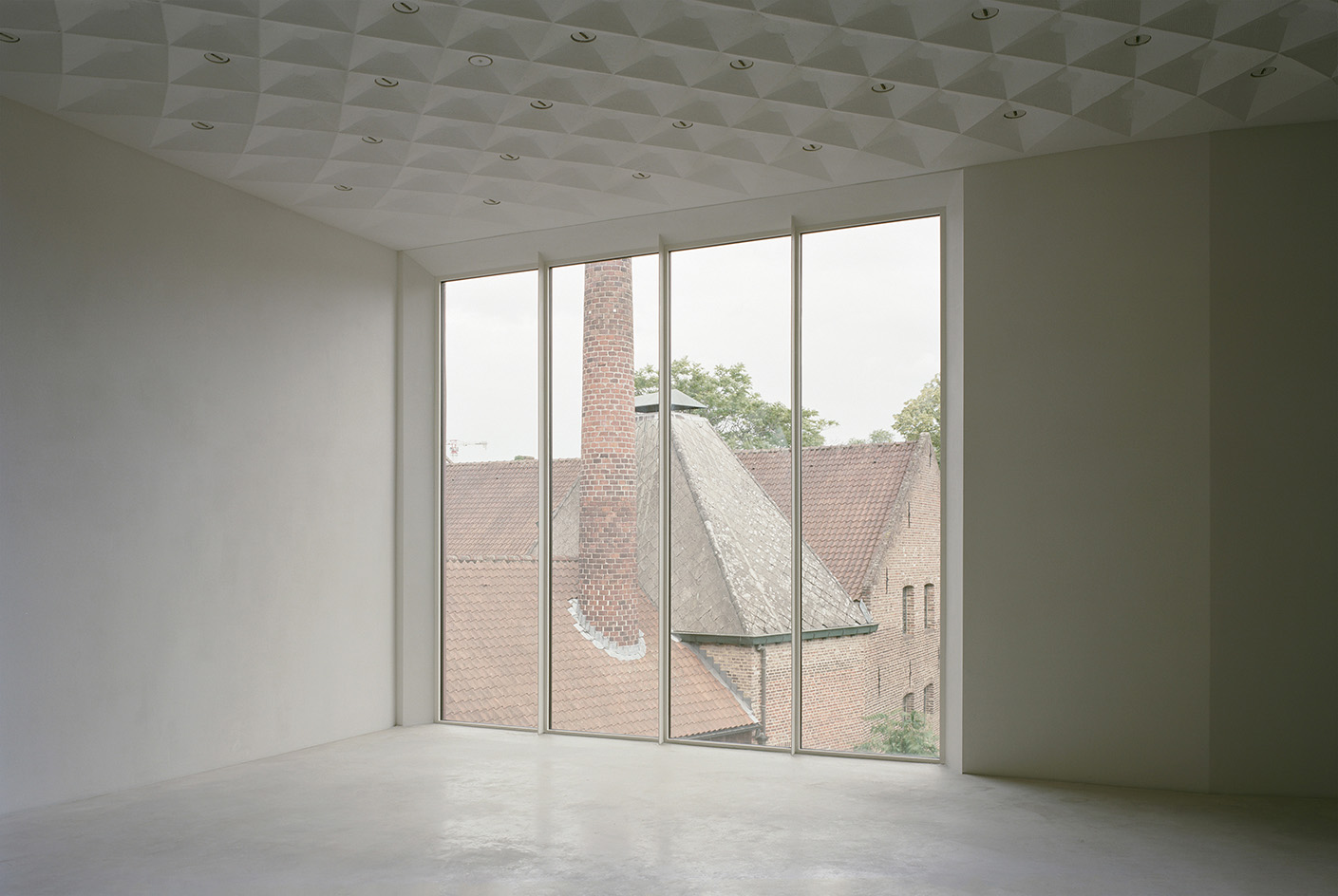‘100 Women: Architects in Practice’ celebrates exceptional global architecture
‘100 Women: Architects in Practice’, a new book by RIBA Publishing, elevates the work of international studios that lead in contemporary building design

'100 Women Architects in Practice' is the title of a new RIBA publication showcasing an archipelago of female practitioners, spread across over 250 regions and five continents. The architecture book has been authored by Harriet Harriss, Naomi House, Monika Parrinder and Tom Ravenscroft.
Finding themselves in a profession plagued by apparent dualities – disconnections between the appearance and reality of architecture; between the architect and images of the architect; between women and images of women – many of the women featured set out to make visible not only the patent but the latent disparities in their immediate contexts.

cover of '100 Women: Architects in Practice'
‘100 Women: Architects in Practice’: an archipelago of female professionals
Common to all practitioners' modes of operation is an approach that prioritises care and repair, which can be understood as an antidote to the patriarchal forces of endless progress and consumption that characterise much of our culture today. Examples of names included are Valérie Mavoungou, Sumayya Vally, Tosin Oshinowo, Fernanda Canales, Frida Escobedo, Anupama Kundoo, and Yasmeen Lari, among many others from across five continents.

100 Architects for 100 Houses, winner, an International competition for AlUla, Saudi Arabia, 2022. The proposal, Carpet of the Wind, took inspiration from the way that a carpet laid on the desert floor, to mark a stop in a journey, starts to craft a relationship between human and earth
At the centre of these acts of healing is the desire by a number of practitioners to bring architecture into a more reciprocal relationship with the world; namely to remedy a prevailing division between architecture and our natural environments. Central to this is the inseparable connection between people and land, and subsequently the infrastructures they create, as evidenced by two of the seven territories of work covered by the book: ‘practice innovation’ and ‘care and connection’.

Ngarannam Village (United Nations Development Programme), Borno State, Nigeria, 2022. View of the primary school
A special focus within these is given to Indigenous practices in particular – which reject the binary between architecture and landscape – and challenge Western definitions of ‘progress’ as a linear trajectory in time that revels in novelty and the ‘new’.

Cien House, Concepcion, Chile, 2011. The architects’ own home – a seven-storey concrete tower that shows how they rethink traditional arrangements and forms
Using methodologies which retrieve historic knowledge of local materials, they attempt to operate in a more cyclical rather than linear way, as in the work of Filipino architect Cathy Saldana who emphasises the importance of combining ‘ancient, traditional strategies with cutting-edge technologies’.

The Waterhouse, South Bund, Shanghai, China, 2010. The four-storey boutique hotel is built into an existing Japanese Army headquarters building from the 1930s
Meanwhile, Belgian architect Veronique Tavernier warns other practitioners to ‘not let aspects of their work unknowingly slip to automation, and risk losing the core skills needed in good architectural practice’.
Wallpaper* Newsletter
Receive our daily digest of inspiration, escapism and design stories from around the world direct to your inbox.

Ilulissat Icefjord Centre, Greenland, 2021. The roof provides a natural extension of the hiking routes and is created as a public space – a kind of gateway between Ilulissat and the wilderness beyond
In essence, these practices seeks to heal destructive agendas of the past; fostering custodianship and care towards each other and our planet. By resetting the parameters of successful architecture, they advocate a new model of practice, going beyond reciprocity to a regenerative practice that aims to give back more than it takes.

Z33, House for Contemporary Art, Design and Architecture, Hasselt, Belgium, 2019. Exhibition Room
They also contribute towards a physical body of female historiographies which will no doubt constitute a much needed reference point for teachers and practitioners alike.

Film room in the New Zealand Pavilion, World Expo 2020, Dubai
Also available from Amazon, Waterstones and Barnes & Noble
-
 Delvis (Un)Limited turns a Brera shopfront into a live-in design installation
Delvis (Un)Limited turns a Brera shopfront into a live-in design installationWhat happens when collectible design becomes part of a live performance? The Theatre of Things, curated by Joseph Grima and Valentina Ciuffi, invited designers to live with their work – and let the public look in
By Ali Morris
-
 With glowing honeycomb-shaped booths, this futuristic Japanese restaurant is ramen heaven
With glowing honeycomb-shaped booths, this futuristic Japanese restaurant is ramen heavenAfter a successful U.S. expansion, Kyuramen touches down in Los Angeles.
By Carole Dixon
-
 Women's stories are at the heart of the Cartier Women's Pavilion at Osaka Expo 2025
Women's stories are at the heart of the Cartier Women's Pavilion at Osaka Expo 2025Japanese architect Yuko Nagayama and British artist Es Devlin are behind the architecture for the Cartier Women's Pavilion
By Danielle Demetriou
-
 Tour the wonderful homes of ‘Casa Mexicana’, an ode to residential architecture in Mexico
Tour the wonderful homes of ‘Casa Mexicana’, an ode to residential architecture in Mexico‘Casa Mexicana’ is a new book celebrating the country’s residential architecture, highlighting its influence across the world
By Ellie Stathaki
-
 Ten contemporary homes that are pushing the boundaries of architecture
Ten contemporary homes that are pushing the boundaries of architectureA new book detailing 59 visually intriguing and technologically impressive contemporary houses shines a light on how architecture is evolving
By Anna Solomon
-
 New book takes you inside Frinton Park Estate: the Essex modernist housing scheme
New book takes you inside Frinton Park Estate: the Essex modernist housing scheme‘Frinton Park Estate’, a new book by photographer James Weston, delves into the history of a modernist housing scheme in Essex, England
By Ellie Stathaki
-
 Take a deep dive into The Palm Springs School ahead of the region’s Modernism Week
Take a deep dive into The Palm Springs School ahead of the region’s Modernism WeekNew book ‘The Palm Springs School: Desert Modernism 1934-1975’ is the ultimate guide to exploring the midcentury gems of California, during Palm Springs Modernism Week 2025 and beyond
By Ellie Stathaki
-
 Hong Kong brutalism explored: tour the island with this new architectural map
Hong Kong brutalism explored: tour the island with this new architectural mapHong Kong brutalism is brought into sharp focus through the launch of Brutalist Hong Kong Map, the latest of its kind in publisher Blue Crow Media’s 20th-century architecture series
By Yoko Choy
-
 'Mid-Century Modern Masterpieces' captured in new monograph like no book before
'Mid-Century Modern Masterpieces' captured in new monograph like no book before'The Atlas of Mid-Century Modern Masterpieces' chronicles hundreds of iconic structures from this golden age of architectural expression
By Jonathan Bell
-
 Dive into these new architecture books: Autumn 2024's reading
Dive into these new architecture books: Autumn 2024's readingThe Wallpaper* guide to the new architecture books for Autumn 2024 - from meaty monographs to themed explorations and lots of immersive visuals
By Ellie Stathaki
-
 'Kiosk: The Last Modernist Booths' book chronicles a little-known area of Eastern Bloc architecture
'Kiosk: The Last Modernist Booths' book chronicles a little-known area of Eastern Bloc architectureZupagrafika brings Kiosk design, a forgotten slice of socialist architecture history, to life with this collection of modular, modernist booths
By Jonathan Bell